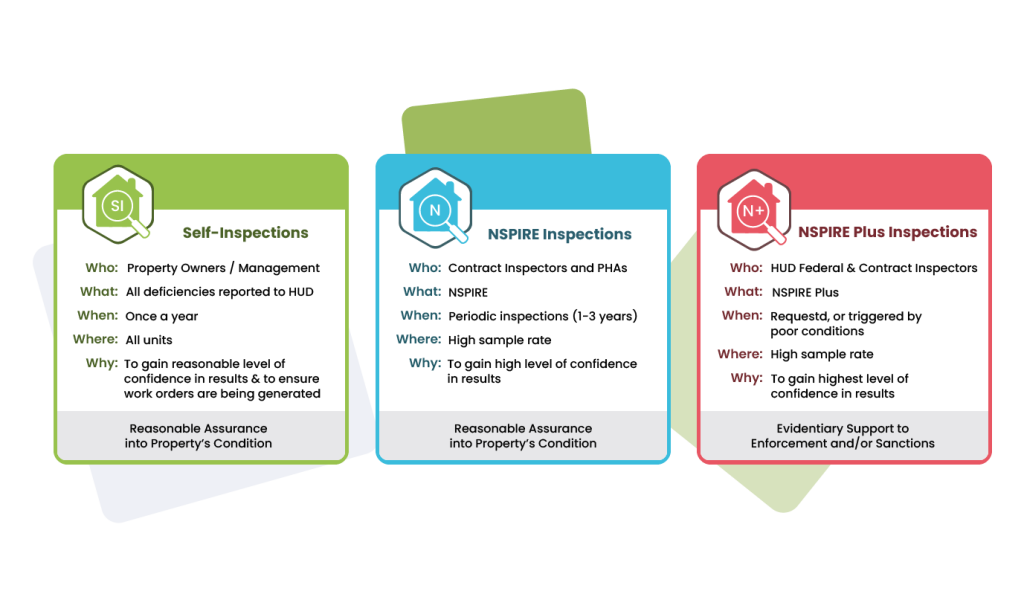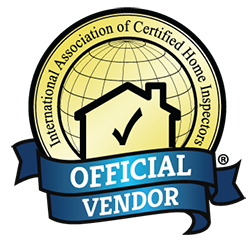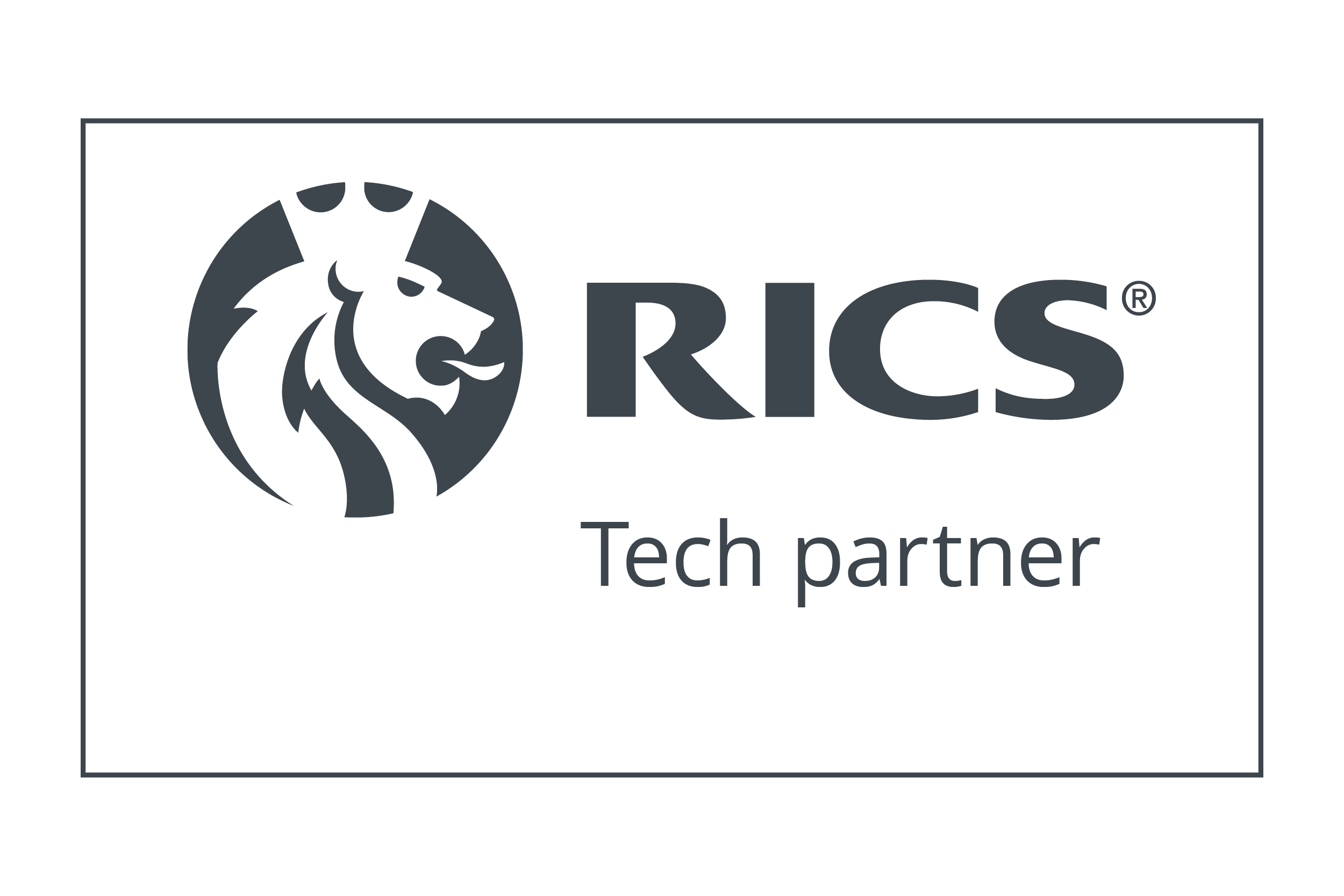The Department of Housing and Urban Development (HUD) recently announced a Final Inspection Standards Notice for the National Standards for the Physical Inspection of Real Estate (NSPIRE). Representing the first major overhaul of the HUD’s inspection standards in over two decades, this framework places the focus on health and safety, rather than property aesthetics.
With NSPIRE prime for being implemented, now is the time to look at the impacts on property management and the availability of affordable homes across the US. Read on as we highlight the key elements of the NSPIRE program and how Property Inspect neatly dovetails with the framework to make affordable housing safer for all.
What is NSPIRE?
Coming into effect on July 1st, the NSPIRE standards have been designed to foster innovation and formally align HUD expectations. Consolidating the Uniform Physical Condition Standard (UPCS) and Housing Quality Standards (HQS), NSPIRE comprises a set of guidelines which apply to the inspection of HUD-managed properties. This includes public housing, FHA-insured buildings, and HUD-assisted multifamily properties.
HUD Secretary Marcia L. Fudge said, “HUD is prioritizing the health and safety of our residents by taking this step for the first time in 20 years. NSPIRE will formally align expectations of housing quality and consolidate inspection standards across HUD programs to raise the bar for what conditions exist in HUD-assisted properties. Everyone deserves to live in a home that is safe. Feedback on our scoring methodology will ensure that millions of homes across the nation are meeting our standards year-round.”
Placing an increased emphasis on tenant health and safety, NSPIRE is expected to result in greater efficiency and better property servicing. The policy also sets out guidance for inspectors on how to support property owners in making routine checks, completing documentation and updating the HUD. Specific requirements have been included for the maintenance of smoke alarms, fire doors, carbon monoxide alarms, heating sources, guardrails, handrails, infestation, mold conditions, and lead-based paint hazards.
“The most positive aspect of NSPIRE is its desire to improve the quality of life for residents and address unit needs in a meaningful way”, said Wandae Jackson, spokesperson for the Charlottesville Public Housing Association of Residents.
The US affordable housing decline
As we covered in a recent blog post, the decline of affordable housing is an issue that stretches back more than 50 years in America. Having been exacerbated by the pandemic and subsequent cost-of-living crisis, it has been reported across every state and major metropolitan area.
A recent Pew Research Center survey emphasized the affordable housing issue, revealing that 49% of US residents believe the lack of such property to be the number one problem facing local communities. However, the HUD has introduced a range of programs with the aim of widening the availability of affordable homes for those on low and medium incomes.
In streamlining and enhancing the efficiency of property inspection processes, HUD’s NSPIRE framework will be one of the keys to alleviating the affordable housing crisis. Integrated with a new digital platform, NSPIRE is expected to allow for faster and more accurate inspections. America’s low and medium-income residents are set to realize benefits such as improved safety standards and reduced costs.
Watch: Reshaping Compliance and Inspections in Housing
Ashley Stinton of Second Century Ventures is joined by Property Inspect’s Warrick Swift and Ray Costello to shed light on the challenges that impede the housing process, focusing on housing inspections and compliance where Property Inspect is spearheading a revolution in these crucial operations.
As Ray Costello, Managing Director of Property Inspect US, said, “Our country is experiencing a huge housing crisis right now, and one of the things making the crisis worse and that we see on an almost daily basis is the lack of technology to streamline the processes and get folks who are experiencing homelessness or housing insecurity housed.
“There’s about to be a paradigm shift in the inspection processes for affordable housing nationwide. For the first time in 30 years, they are going to change how inspections are done that allow for voucher programmes to be funded. NSPIRE is where they are going to take all three inspections: (HQS), React and UCPS. They are putting them together and it’s going to be standardized.”
The purpose of the NSPIRE program
Properties inspected in line with the NSPIRE standards will be assigned scores based on health and safety standards, highlighting the need for remedial action. These scores can be estimated using the Updated NSPIRE Score Calculator. However, property owners should be aware that the calculation won’t account for all of the factors known to have a bearing on the final NSPIRE rating.
Prioritizing the replacement of outdated pen and paper methods with streamlined and efficient electronic systems, NSPIRE will also be of benefit to America’s property inspectors. Greater accuracy will be assured, with inspections being based on clearly defined standards and protocols. The NSPIRE system also allows for the capture of property pictures and collaboration with the HUD.
Inspections based on the NSPIRE protocol will involve thorough reviews of the building interior, exterior and outdoor spaces. There will be specific items to observe in each area, with the inspectors uploading their findings to the NSPIRE platform.
Program owners and agents will then be able to review the inspection results, seeing which corrective actions have been prioritized. Life threatening or severe deficiencies will have to be resolved in less than 24 hours, with 30 days being allowed for moderate deficiencies and 60 days for low-risk deficiencies. The correction of such deficiencies should be recorded via the NSPIRE platform.
The NSPIRE model also sets out the following updates:
- The requirement for all site owners and managing agents to conduct annual self-inspections of their units
- An increased focus on health and safety standards within units, where residents spend most of their time
- Types of resident surveys that may be conducted
- A reduction in the expected response to inspection notifications from 120 to 14 days, encouraging more regular upkeep and maintenance.
NSPIRE will also be of significant benefit to HUD itself, enabling the availability of reliable, valid and objective property data from which it can gain crucial insight into the state of housing across the nation. Previously separate inspection standards will be aligned, with better performance assessments for HUD-assisted properties, and there will also be a three-year review cycle, ensuring that NSPIRE stays up to date with industry advancements and technologies.
What are the three components of NSPIRE?
NSPIRE has been designed around three distinct components, and each one intends to help HUD achieve its goals through the newly launched inspection program.
Overall, the NSPIRE model takes into account three types of inspections, as follows:
- Self-Inspection: Each owner/manager will need to inspect all of their units annually, keeping a record of those inspections for three years.
- NSPIRE Inspections: These should be conducted by public housing agencies (or contract inspectors) every one to five years. This can depend on a property’s previous inspection score. The lower the score, the more frequent the need for an inspection
- NSPIRE Plus: HUD federal inspectors can and may carry out additional inspections if a property is considered in poor condition.

Property Inspect and NSPIRE: Working to make affordable housing safer
Having collaborated closely with the HUD, Property Inspect is enabling greater efficiency and streamlining US property operations in a number of states. We have conducted intensive testing to ensure that Property Inspect works seamlessly with the new NSPIRE platform. Having integrated the latest NSPIRE templates, we’ve significantly enhanced the property inspection processes for significant time and cost savings.
“In the context of the housing crisis we recognize the importance of affordability,” said Warrick Swift, Marketing Director of Property Inspect. “Our software is designed to enhance inspection processes, reducing costs, saving time, and improving overall efficiency. By incorporating such technologies we can ultimately reduce costs, with the savings passed on to residents in affordable housing.”
Being at the forefront of the NSPIRE standard, Property Inspect are supporting America’s affordable property owners in ensuring compliance, operational efficiency and tenant welfare. In digitizing inspection and reporting processes, we’re in the best possible place to meet America’s diverse housing needs. Continual improvement is assured, as our software enables the automatic scheduling of follow-up inspections based on inspection scores or grades.
Our NSPIRE-aligned software also enables customisation across a wide range of inspection protocols, including HQS, Rapid Rehousing, and HCV; the automatic conversion of inspection data into professional and easily understandable reports with time-stamped visuals; the assignment of property inspection scores based on NSPIRE standards for rapid property condition insights; automatic scheduling of follow-up inspections based on NSPIRE scores or grades; and the streamlined production of property analytics and summary reports for continuous improvement.
If you’re ready to say goodbye to the inefficiencies of manual paper processes and hello to the time and cost-savings of NSPIRE-aligned digitization, sign up for a free trial of Property Inspect.
With a streamlined workflow including smoother scheduling, inspection execution, and report generation, you’ll be empowered to deliver safer and more affordable homes for many Americans.











